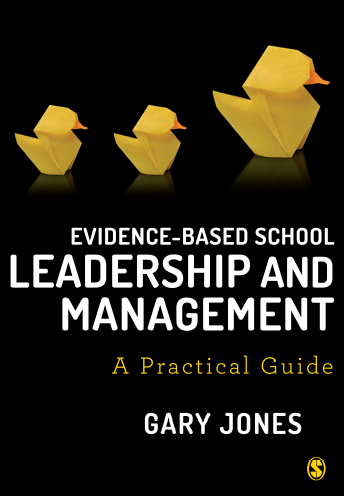Recent research undertaken by Walker, Nelson, Bradshaw with Brown (2019) has found that academic research has a relatively small impact on teachers’ decision-making, with teachers more likely to draw ideas and support from their own experiences (60 per cent) or the experiences of other teachers/schools (42 per cent). Walker et al go onto note that this finding is consistent with previous research and go onto argue that these findings suggests that those with an interest in supporting research-informed practice in schools should consider working with and through schools, and those that support them, to explore their potential for brokering research knowledge for other schools and teachers.
In many ways we should not be surprised by these findings as similar findings about research use have been found in ethnographic research in UK general practice (Gabbay and le May, 2004) , where the findings show that clinicians very rarely accessed research findings and other sources of formal knowledge but instead preferred to rely on ‘mindlines’ – which they defined as ‘collectively reinforced, internalised, tacit guidelines. These were informed by brief reading but mainly by their own and their colleagues’ experience, their interactions with each other and with opinion leaders, patients, and pharmaceutical representatives, and other sources of largely tacit knowledge that built on their early training and their own and their colleagues' experience.
Now in this short blog I cannot do full justice to the concept of ‘mindlines’. Nevertheless if you would like to find out more I suggest that you have a look at (Gabbay and Le May, 2011; Gabbay and le May, 2016). That said, for the rest of this blog I’m going to draw on the work of (Wieringa and Greenhalgh, 2015) who conducted a systematic review on mindlines and draw out some of mindlines key characteristics
• Mindlines are consistent with the notion that knowledge is not a set of external facts waiting to be ‘translated’ or ‘disseminated’ but instead knowledge is fluid and multi-directional – and constantly being recreated in different settings by different people, and on an on-going basis.
• Mindlines involve a shared reality but not necessarily homogenous reality – made up of multiple individual and temporary realities of clinicians, researchers, guideline makers and patients
• Mindlines incorporate tacit knowledge and knowledge in practice in context
• Mindlines involves the construction of knowledge through social processes – this takes the form of discussions influenced by cultural and historic forces – and are validated through a process of ‘reality’ pushing back in a local context
• Mindlines are consistent with the view anyone including patients are capable of creating valid knowledge and can be experts in consultations
• Mindlines may not be manageable through direct interventions however they maybe self-organising as the best solution for a particular problem in a defined situation is sought out
What are the implications of ‘mindlines’ for those interested in brokering research knowledge in schools?
Wieringa and Greenhalgh go onto make of observations about the implications for practitioners, academics and policymakers if they embrace the mindlines paradigm, and which are equally applicable to schools.
1. We need to examine how to go about integrating various sources of knowledge and whether convincing information leads to improved decision-makings
2. In doing so, we need to think more widely about counts as evidence in school – and how these different types of evidence can best used by teachers and school leaders in the decision-making process
3. We need to examine how mindlines are created and validated by teachers, school leaders and other school stakeholders and how they subsequently develop over time.
In other words, research which focusses on how researchers can better ‘translate’ or ‘disseminate’ research is unlikely to have much impact on the guidelines teachers and school leaders use to make decisions.
And finally
I’d just like to make a couple of observations about the report by Walker et al (2019). First, I don’t like reports where reference is made to the ‘majority of respondents’ and no supporting percentage figure is given. Second, the terms climate and culture seem to be used interchangeably although they refer to quite different things. Third, significant differences between groups of teachers are highlighted yet no supporting data is provided or explanation of what is meant in this context by significant.
References
Gabbay, J. and le May, A. (2004) ‘Evidence based guidelines or collectively constructed “mindlines?” Ethnographic study of knowledge management in primary care’, Bmj. British Medical Journal Publishing Group, 329(7473), p. 1013.
Gabbay, J. and le May, A. (2016) ‘Mindlines: making sense of evidence in practice.’, The British journal of general practice : the journal of the Royal College of General Practitioners. British Journal of General Practice, 66(649), pp. 402–3. doi: 10.3399/bjgp16X686221.
Gabbay, J. and Le May, A. (2011) Organisational innovation in health services: lessons from the NHS Treatment Centres. Policy Press.
Walker, M., Nelson, J, Bradshaw, S. with Brown, C (2019) Teachers’ engagements with research; what do we know? A research briefing, London: Education Endowment Foundation,
Wieringa, S. and Greenhalgh, T. (2015) ‘10 years of mindlines: a systematic review and commentary’, Implementation Science. BioMed Central, 10(1), p. 45.
